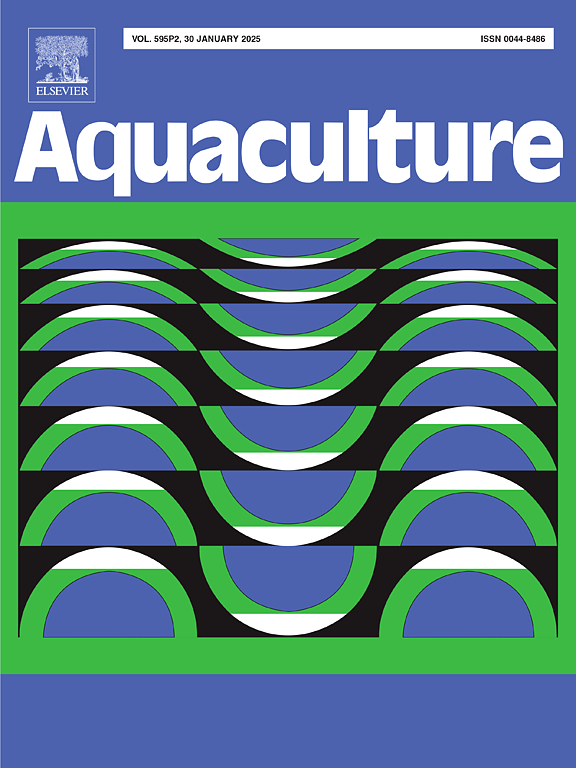巨蛤变态转变的神经内分泌调节
IF 3.9
1区 农林科学
Q1 FISHERIES
引用次数: 0
摘要
对于许多底栖海洋生物来说,幼虫到幼体的蜕变伴随着从浮游生物到底栖动物的转变。这一过渡过程必须受到精确的调控,并与外部环境因素相结合,以使幼虫在正确的地点、时间和条件下安顿下来。尽管海洋无脊椎动物变质过程的分子机制研究相对较少,但越来越多的证据表明,神经内分泌信号在这一过程的调节中起着重要作用。在这项研究中,我们研究了神经递质-氨基丁酸、血清素、肾上腺素和左旋多巴对巨蛤(Hippopus Hippopus)定居和变形的影响。然后,我们利用河马和相关物种三砗磲的转录组测定了在早期发育过程中编码神经递质相关酶和受体的基因的表达。肾上腺素被认为是诱导沉淀和蜕变的一个有希望的候选物质,而血清素和左旋多巴可能参与其他与沉淀相关的功能,如幼虫游泳和寻找行为。在幼童发育阶段,参与神经递质生物合成的转录物编码酶的上调支持了这一点。神经递质可能参与调节变质过程,这表明它们有可能提高巨蛤养殖中的蚌产量。除了在海水养殖中的应用之外,这些结果还提供了对巨蛤幼虫神经内分泌系统复杂性的见解。本文章由计算机程序翻译,如有差异,请以英文原文为准。
Neuroendocrine regulation of the metamorphic transition of giant clams
For many benthic marine organisms, metamorphosis of larvae into juveniles is accompanied by a shift from the plankton into the benthos. This pelagobenthic transition must be precisely regulated and integrated with external environmental cues to allow the larva to settle at the right place, time, and conditions. Though the molecular mechanisms of the metamorphic processes in marine invertebrates remain relatively understudied, increasing evidence highlights the significant role played by neuroendocrine signaling in the modulation of this process. In this study, we examined the effect of the neurotransmitters gamma-aminobutyric acid, serotonin, epinephrine, and L-DOPA on the settlement and metamorphosis of the giant clam, Hippopus hippopus. We then determined the expression of genes encoding neurotransmitter-related enzymes and receptors during early development using transcriptomes of H. hippopus and a related species, Tridacna gigas. Epinephrine emerged as a promising candidate for inducing settlement and metamorphosis, while serotonin and L-DOPA may be involved in other settlement-related functions such as larval swimming and seeking behavior. This is supported by the upregulation of transcripts encoding enzymes involved in neurotransmitter biosynthesis during the competent pediveliger stage. The likely involvement of neurotransmitters in the regulation of the metamorphic process suggests their potential to boost spat yield in giant clam aquaculture. Beyond its applications in mariculture, these results provide insights into the complexity of the giant clam larval neuroendocrine system.
求助全文
通过发布文献求助,成功后即可免费获取论文全文。
去求助
来源期刊

Aquaculture
农林科学-海洋与淡水生物学
CiteScore
8.60
自引率
17.80%
发文量
1246
审稿时长
56 days
期刊介绍:
Aquaculture is an international journal for the exploration, improvement and management of all freshwater and marine food resources. It publishes novel and innovative research of world-wide interest on farming of aquatic organisms, which includes finfish, mollusks, crustaceans and aquatic plants for human consumption. Research on ornamentals is not a focus of the Journal. Aquaculture only publishes papers with a clear relevance to improving aquaculture practices or a potential application.
 求助内容:
求助内容: 应助结果提醒方式:
应助结果提醒方式:


